Architecture in Belgium - One country, three style worlds incl. route
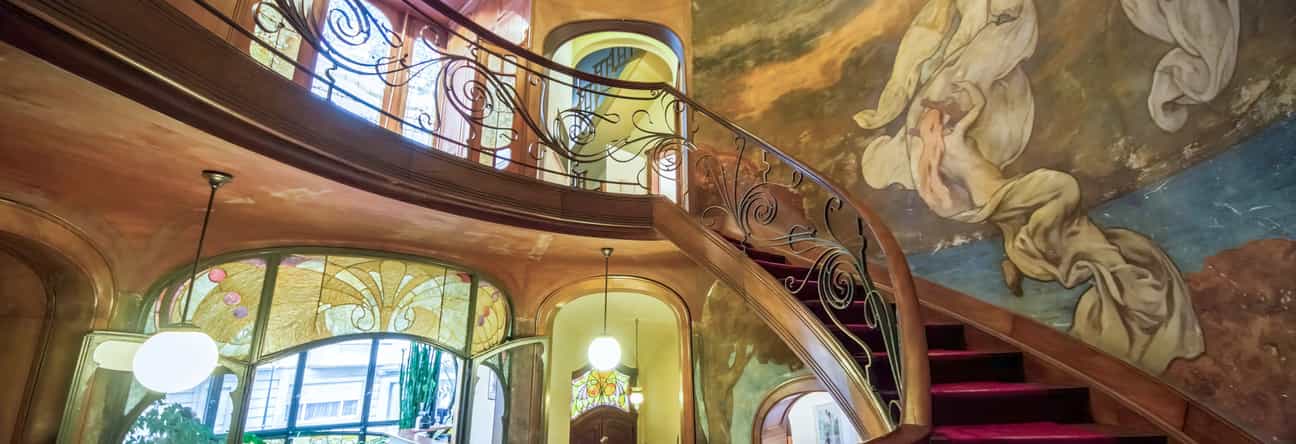
Belgium's architecture is surprising: Three completely different architectural experiences can be found in a small space – from the world-famous Art Nouveau in Brussels to striking Brutalism on the coast to the brick architecture of Flanders.
If you love cities but are looking for more than just sights, but also creative ideas and true contrasts, Belgium is the place for you.
This article shows you where to best experience Belgian architecture. With tips for city walks, background information on Belgian architects, and specific places you shouldn't miss.
Experience Art Nouveau – Where Belgian architecture became world famous
An important part of Belgian architecture begins in Brussels: with Art Nouveau and the iconic designs of the architect Victor Horta. His buildings are now considered milestones in European architectural history – most notably the Hôtel Tassel, the Maison Cauchie, and the Horta Museum.
Anyone interested in architecture in Belgium will experience curved lines, floral details, stained glass windows, ironwork, and a style that continues to shape Belgian architects today.
Art Nouveau has also left its mark outside of Brussels: In Antwerp, Liège, and even in Charleroi, it's worth looking up. Many of the most beautiful facades aren't found on postcards, but in residential streets and former commercial districts.
Travel tip: In Brussels, the most important Art Nouveau buildings are easy to explore on foot – especially in the Ixelles and Saint-Gilles districts. If you want to delve deeper, visit the Horta Museum or the CIVA Architecture Center.
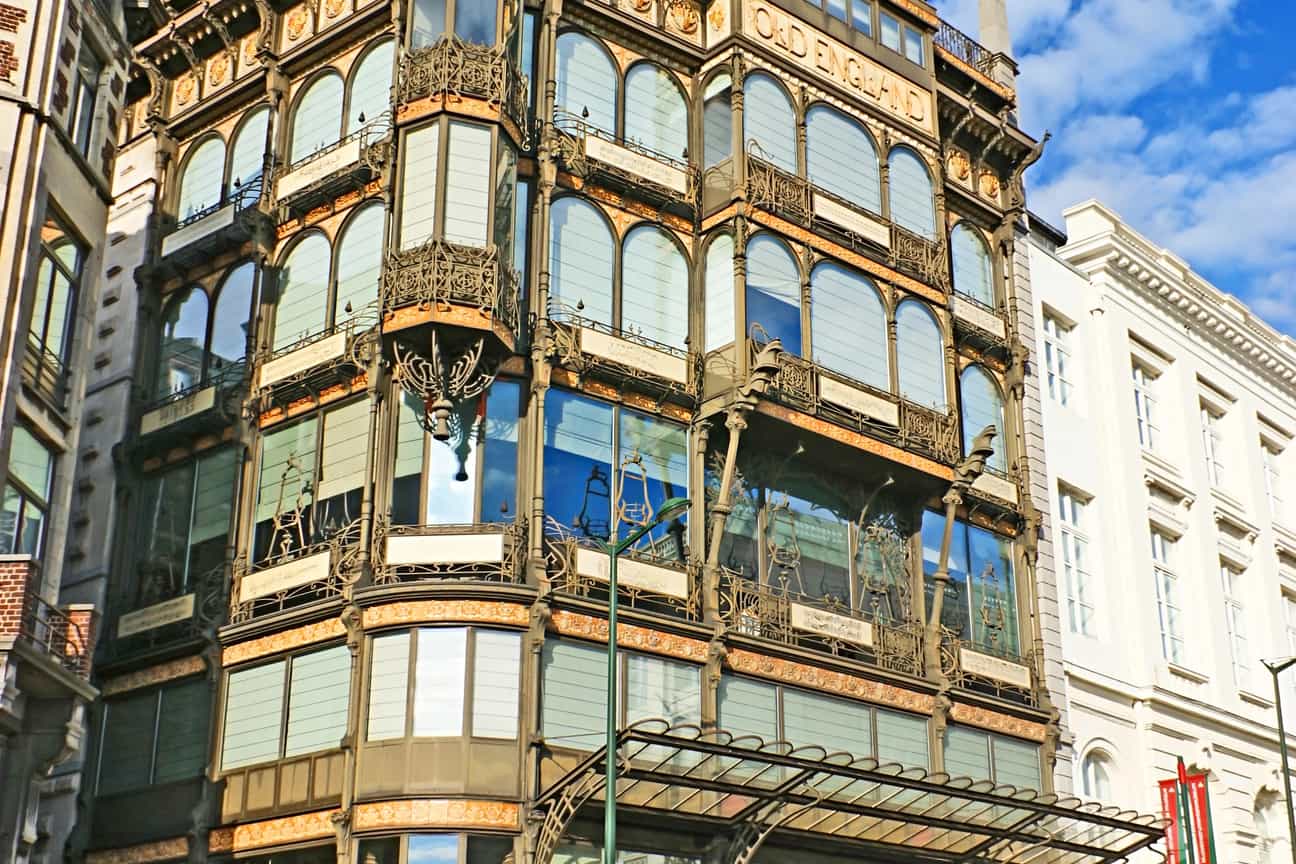
The Musical Instrument Museum in Brussels – impressive Art Nouveau architecture of the former Old England department store on Coudenberg Street
Concrete Modernism & Brutalism – Belgium beyond the clichés
Anyone who thinks that Belgian architecture consists only of brick and Art Nouveau should take a second look: Brutalism also has a firm place in Belgium – raw, angular and often surprisingly poetic.
Particularly in the 1960s and 70s, striking buildings made of exposed concrete were built in cities such as Ghent, Brussels and Ostend. Architects such as Juliaan Lampens, Léon Stynen and Paul Neefs shaped the image of entire districts – with university buildings, churches or administrative centers.
Particularly well-known:
- Lampens' University Library in Eke
- The KBC high-rise in Antwerp
- The housing projects around Brussels' western flank
Many travelers overlook these works or approach them with skepticism. But those who engage with them discover an architecture that is consistent, bold, and deeply rooted in Belgian architectural history.
Tip for architecture fans: In Ghent and Brussels, there are themed tours on modern Belgian architecture. A particularly exciting option is a visit to the Laeken district, where concrete and history meet in an unusual way.
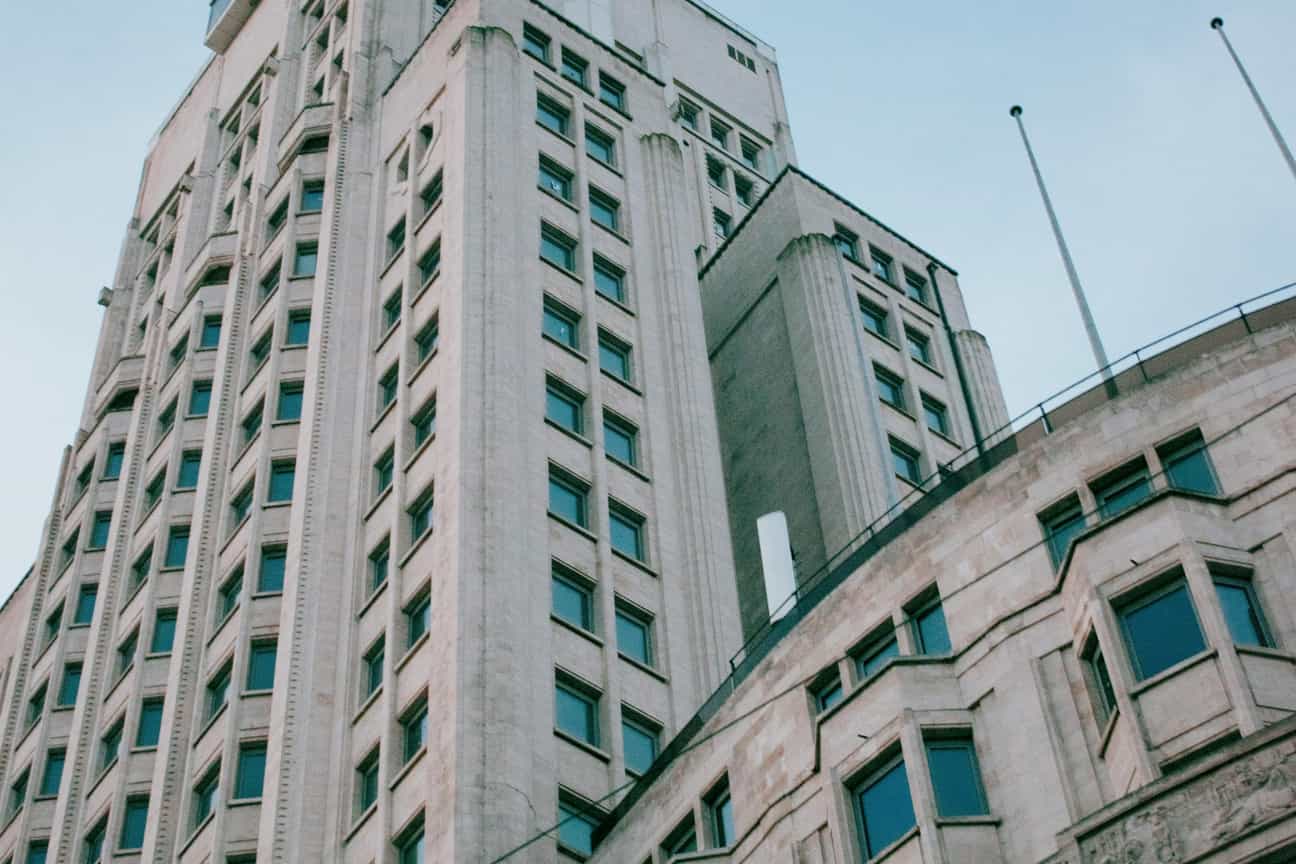
The KBC Tower in Antwerp – a landmark of modern architecture in the Belgian port city
Brick & Romanticism – Experience Flemish architectural culture
A defining element of Belgian architecture is brick. From medieval gabled houses to modern residential architecture, it can be found throughout Flanders. It is characterized by three colors: red, gray, and sometimes almost black.
Cities like Bruges, Mechelen, or Damme demonstrate the diversity of Belgian architecture: Here, Gothic architectural forms combine with warm materials, clarity with craftsmanship. Brick plays a key design role, especially in monasteries, city gates, and merchant houses.
But many contemporary Belgian architects also consciously work with brick – as a response to industrial standardization. The material represents regional roots and timeless elegance.
Travel tip: Those who want to discover Flemish architectural culture should take time for a city walk in Bruges or Mechelen – a visit to the Hof van Busleyden Museum, which impressively combines old and new architecture, is particularly worthwhile.
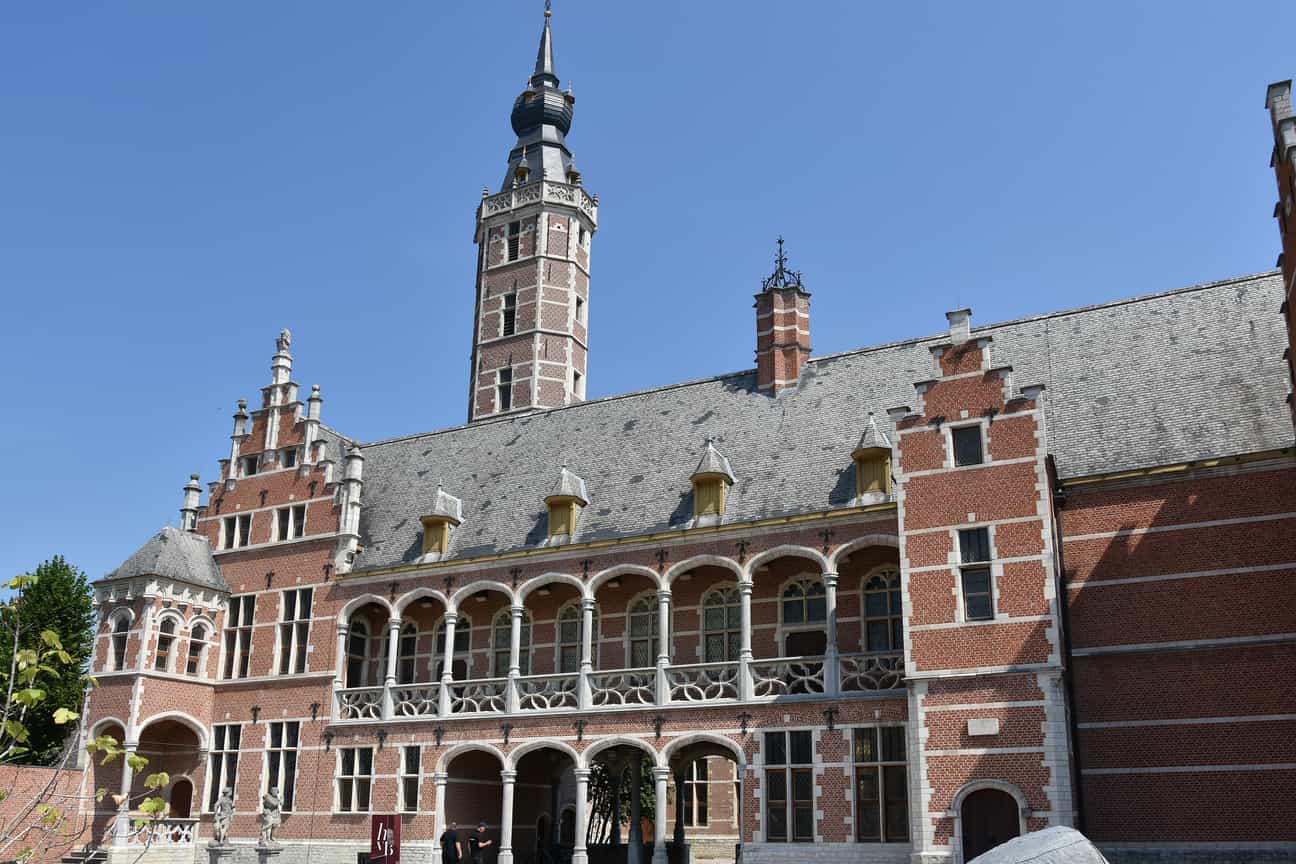
Museum Hof van Busleyden in Mechelen – a cultural highlight with fascinating history and architecture “Museum Hof van Busleyden Mechelen 6-07-2018 11-52-38” by Paul Hermans is licensed under CC BY 4.0.
Belgian architects you should know
Anyone interested in architecture in Belgium will quickly encounter an impressive list of names. Many Belgian architects have not only shaped the cityscape but have also achieved international recognition – from Art Nouveau to the contemporary avant-garde.
Classics & Pioneers
- Victor Horta: The most famous representative of Belgian Art Nouveau. Horta combined decorative lightness with functional design. His works, such as the Hôtel Tassel and the Horta Museum in Brussels, are UNESCO World Heritage sites and epitomize Art Nouveau architecture in Belgium.
- Henry van de Velde: An early modernist who favored clean lines and worked internationally. His influence extends to the Bauhaus – also through his work in Weimar. In Belgium, you can visit, among other places, the "Van de Velde Institute" in Ghent.
Modern & Contemporary
- Juliaan Lampens: He is considered a Belgian Brutalist: his buildings appear like monoliths – cast from exposed concrete, reduced, almost meditative. Worth seeing: the Eke Library and the Van Wassenhove House near Ghent.
- Stéphane Beel: Known for clean lines, glass surfaces and subtle contrasts to the surroundings. He has redesigned the STAM Museum in Ghent and designed new rooms for the Rubens House in Antwerp, among others.
- Xaveer De Geyter: His style is urban and often experimental. One of his most famous works is the new Ghent City Library (De Krook), which rethinks modern architecture with public space.
- Kersten Geers & David Van Severen (OFFICE KGDVS: The duo is shaping contemporary architecture in Belgium with a distinctive, almost graphic style. Their Brussels-based office is internationally active, with projects in Seoul, Basel, and Mexico City, among others.
These architects demonstrate how diverse Belgian architecture is – and that it never commits to a single style.
Tip for architecture enthusiasts: Many of these works are freely accessible or open to the public. Ideal for a personalized architectural itinerary – for example, through the university district in Ghent, Brussels' Art Nouveau district of Saint-Gilles, or the new creative quarter Tour & Taxis.
Architecture Route Belgium: 3 days, 3 cities, iconic architecture
Day 1 – Brussels: Art Nouveau Meets Urban Modernism
- Victor Horta Museum: One of the most important Art Nouveau buildings in the world. The architect's former home provides deep insights into Horta's style and philosophy.
- Maison Cauchie: Fascinating facade with sgraffito decorations, very close to the Parc du Cinquantenaire.
- Palais Stoclet (exterior only): A rare representative of the Viennese Secession style in Belgium – with mosaics by Gustav Klimt.
- Tour & Taxis Site: An example of the conversion of old industrial architecture with modern elements, exciting for lovers of urban development.
Evening Tip: Stroll through the Ixelles district – many elegant residential buildings that combine Belgian Art Nouveau and French influences.
Day 2 – Ghent: Brutalism & Contemporary Architecture
- University Library Boekentoren (Henry van de Velde): Iconic book tower, also an architectural highlight of modernism.
- STAM – Ghent City Museum (Stéphane Beel): Combination of historic abbey and modern architecture – exemplary of Beel's style.
- Kapelle van Kerselare (Juliaan Lampens) (just outside): A brutalist pilgrimage site that rests like a concrete monolith in the greenery.
Evening Tip: Architectural photo walk through the old town – many details on the facades, between Gothic and modern.
Day 3 – Antwerp or Wallonia: Contrasts & a Look to the Future
Option 1: Antwerp
- Museum aan de Stroom (MAS): Modern landmark with red sandstone and corrugated glass – impressive view included.
- Havenhuis (Zaha Hadid): Floating glass architecture on a historic plinth – one of the most spectacular buildings of our time.
- Cogels-Osylei Quarter: Collection of magnificent villas in various styles – Art Nouveau, Neo-Renaissance, Art Deco.
Option 2: Wallonia (e.g., Liège & surrounding area)
- Liège-Guillemins Station (Santiago Calatrava): Monumental station concourse with a flowing design language.
- La Louvière: Keramis Ceramics Center (Pierre Hebbelinck): Museum and production facility in impressive brick modernism.
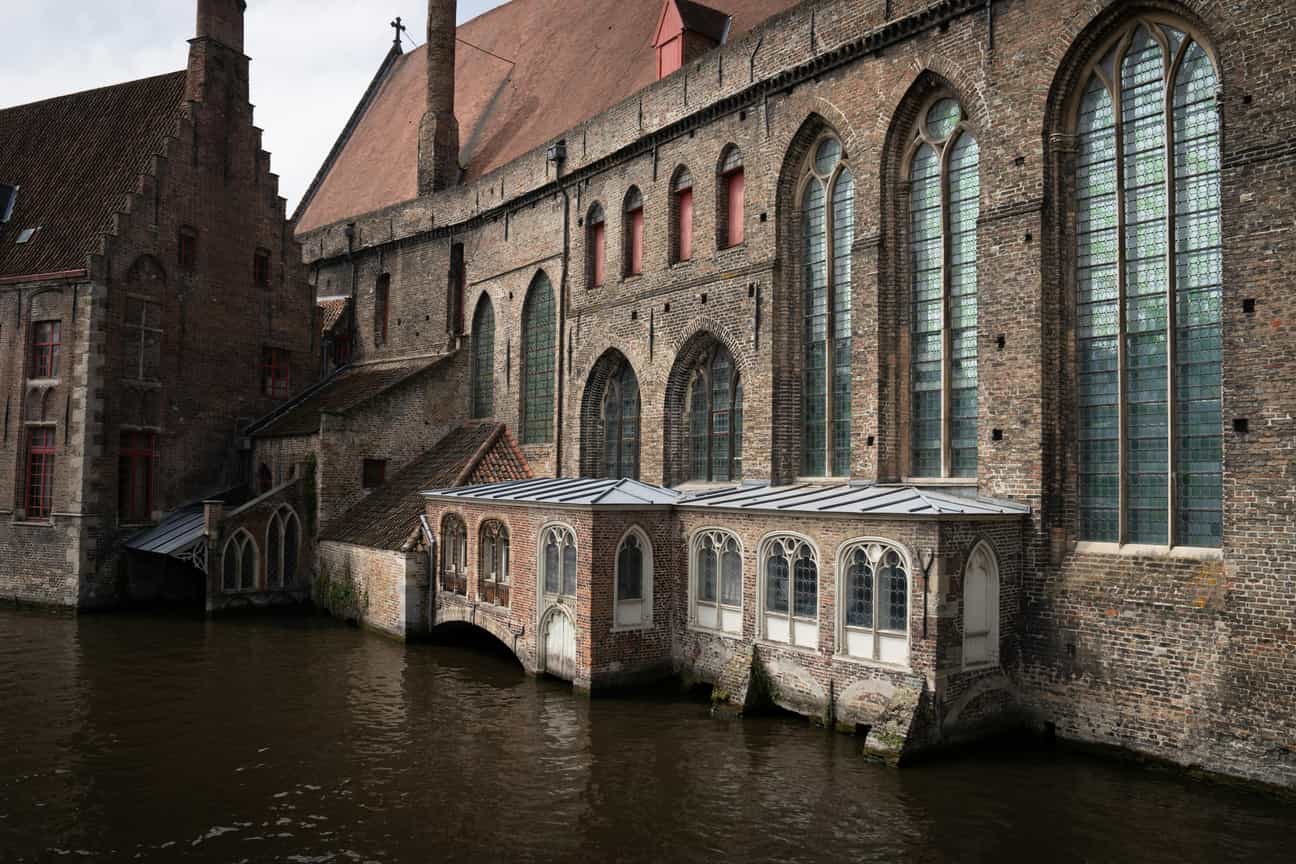
Bruges – historic brick house, photographed from the water, highlighting the unique charm of the city
Rediscover Belgian architecture
Belgium is more than an insider tip for architecture lovers – it's a true mosaic of European architecture. From playful Art Nouveau in Brussels to Brutalist clarity in Ghent and iconic contemporary architecture in Antwerp or Liège, Belgium's multifaceted travel destination is evident.
Those interested in architecture won't find a uniform style here, but rather an exciting interplay of eras, materials, and ideas. Often, it's precisely the quieter places – university buildings, chapels, or residential areas – that leave lasting impressions.
Our tip: Go with the flow, take a closer look, and take your time. Because Belgian architecture doesn't always reveal its charm at first glance – but it's all the more lasting for that.